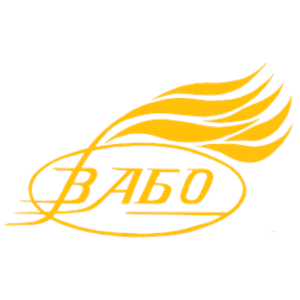Requirements for execution
An article should be relevant, justify a purpose and have statistically valid results of the author’s (authors) original research which hasn’t been published and considered by the editorial boards of other journals.
General requirements:
1) you should indicate the following in the left upper corner:
- UDC;
- surname and name (in full), scientific degree, academic ranks, a full name of post and institution where the author (co-authors) works or studies, institution address, e-mail of the author (all co-authors), ORCID (https://orcid.org/) – in two languages (in Ukrainian and English)*
2) one line below, the article’s title is centered (semi-bold, in capitals) – in two languages (in Ukrainian and English)*
3) an expanded structured abstract of the scientific article consists minimum of 1800 characters and includes mandatory structural elements of the article (problem statement, analysis of the recent research and publications, statement of the article’s purpose, presentation of the basic material, conclusions) – in two languages (in Ukrainian and English)*
* if the article is not Ukrainian or English, you should provide one in the article’s language.
4) article text should be structured and include such mandatory elements (they are put in semi-bold):
- problem statement in general and its connection with the important scientific or practical tasks;
- the analysis of recent research and publications, which have initiated the solution of the relevant problems and the author relies on, the specification of previously unresolved parts of the general problem the article is devoted to;
- the formulation of a goal (task statement);
- the presentation of the main material (including the description of materials and research methods, research design, ethical problems and research limits, and mandatory substantiation, statistical processing and discussion of the research findings;
- conclusions and prospects for further research;
- Bibliography: minimum 10 items in a source language (references to literature sources are given in alphabetical order; the bibliographic list involves only sources which are mentioned in the article and is executed taking into account the National Standard of Ukraine DSTU 8302: 2015 “Information and documentation. Bibliographic reference. General principles and rules of composition”).
- References (transliteration) are executed following APA.
Technical requirements:
- the article text should be keyboarded (editor WORD for WINDOWS) using Times New Roman, 14, line spacing – 1.5, edges: l2 cm on all sides; paragraph indent – 1.25;
- the volume of the article should be at least 10 pages (article optimal size – 20–24 thousand characters);
- it is not allowed to use the scanned or photographed diagrams, drawings, tables, etc.;
- in formulas only generally accepted characters are used;
- all table, pictures and graphics should be numbered, each should have a name;
- in constructing graphs keep in mind that the magazine is in black and white.
EXAMPLE
УДК 351.851
Петро КУХАРЧУК
кандидат наук з державного управління, доцент, доцент кафедри управління та адміністрування, Комунальний заклад вищої освіти «Вінницька академія безперервної освіти»
kpmkpma@gmail.com
ORCID: 0000-0002-2051-3298
ДЕРЖАВНЕ РЕГУЛЮВАННЯ РОЗБУДОВИ БЕЗПЕЧНОГО І ЗДОРОВОГО ОСВІТНЬОГО СЕРЕДОВИЩА В ЗАКЛАДАХ ОСВІТИ
Анотація. Метою статті є... Методологія дослідження... Наукова новизна роботи полягає в тому, що вперше... Висновки....
Ключові слова: освітнє середовище, компетентність, виховання, здоров’я.
Petro KUKHARCHUK
Candidate of Sciences in Public Administration, Associate Professor, Associate Professor of the Department of Management and Administration, Vinnytsia Academy of Continuing Education
kpmkpma@gmail.com
ORCID: 0000-0002-2051-3298
STATE REGULATION OF THE DEVELOPMENT OF A SAFE AND HEALTHY EDUCATIONAL ENVIRONMENT IN EDUCATIONAL INSTITUTIONS
Abstract. The aim of the article is... The research methodology is... The scientific novelty of the work is... Conclusions...
Key words: educational environment, competence, education, health.
Постановка проблеми. Впровадження Концепції нової української школи стимулювало посилення зацікавленості наукової спільноти до державного регулювання розбудови безпечного і здорового освітнього середовища в закладах освіти на основі різних аспектів здоров’язбереження, але проблема формування здоров’язбережувальної компетентності педагогів у процесі професійної діяльності не була предметом цілісного дослідження...
Аналіз джерел та останніх досліджень. Роль здоров’язбереження у професійній діяльності педагога розкрита у працях таких зарубіжних та вітчизняних науковців, як: Г. Валлер, A. Mільк, К. Ортманн, Т. Алєксєєнко, С. Архипова, Т. Веретенко, Г. Григоренко, Л. Грицюк, Т. Журавель, Н. Зимівець, А. Капська, Л. Коваль...
Метою дослідження є спроба теоретично обґрунтувати регулювання розбудови безпечного і здорового освітнього середовища в закладах освіти на основі здоров’язбережувальної компетентності...
Виклад основного матеріалу. Розбудова безпечного і здорового освітнього середовища на основі здоров’язбережувальної компетентності в закладах освіти – складний та багатовекторний процес...
Висновки. Державне регулювання розбудови безпечного і здорового освітнього середовища в закладах освіти – це підвищення мотивації педагогів до здоров’язбережувальної діяльності здійснювати шляхом формування в учнів усвідомлення вагомості здоров’язбережувальної компетентності для успішного здійснення майбутньої професійної діяльності...
ЛІТЕРАТУРА:
- Чернецька Ю.І. Соціально-педагогічні умови адаптації старших підлітків у загальноосвітніх санаторних школах-інтернатах : автореф. дис. … канд. пед. наук : спец. 13.00.05 «Соціальна педагогіка». Харків, 2008. 22 с.
REFERENCES:
- Chernecjka Ju.I. (2008). Socialjno-pedaghoghichni umovy adaptaciji starshykh pidlitkiv u zaghaljnoosvitnikh sanatornykh shkolakh-internatakh [Socio-pedagogical conditions of adaptation of older teenagers in general educational sanatorium boarding schools]: avtoref. dys. … kand. ped. nauk: spec. 13.00.05 «Socialjna pedaghoghika». Kharkiv, 22 s. [in Ukrainian]







